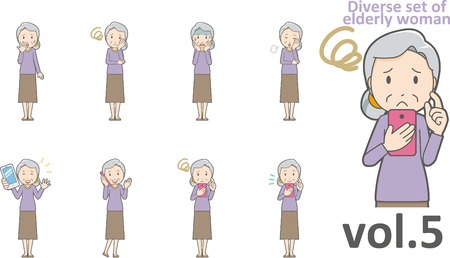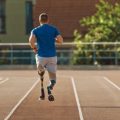Importance of Caregiver Engagement in Fall Prevention
Caregiver engagement plays a pivotal role in reducing the risk of falls among patients, especially within the UK’s healthcare system where patient safety and quality care are paramount. Active involvement of caregivers—whether they are family members or professional carers—not only helps in identifying potential fall risks but also supports patients in adhering to prevention strategies. The NHS and other UK-based health organisations consistently highlight that collaborative approaches, which include caregiver education and participation, lead to better patient outcomes. By ensuring that caregivers are well-informed about individual needs, environmental hazards, and evidence-based fall prevention practices, we can create safer environments both at home and in healthcare settings. Engaged caregivers are more likely to notice subtle changes in a patient’s mobility or behaviour, enabling timely intervention and fostering a culture of proactive care. Ultimately, empowering caregivers through education and involvement is essential for reducing falls and promoting independence among vulnerable populations across the UK.
Understanding Common Fall Risks in the UK
Falls are a significant concern for older adults and vulnerable individuals across the United Kingdom, particularly within home environments and care settings. For caregivers, recognising both environmental and personal risk factors is essential to designing effective fall prevention strategies. This knowledge empowers caregivers to make informed decisions, adapt living spaces, and provide appropriate support tailored to British cultural contexts.
Environmental Risk Factors in British Homes and Care Settings
The unique architectural features and weather conditions in the UK can increase fall risks. Older properties may have uneven flooring, narrow staircases, or poorly lit corridors. Wet weather often leads to slippery entrances and pathways, further heightening danger. Care settings such as residential homes must also contend with cluttered communal areas or insufficient handrails.
| Environmental Factor | Description | Common Locations |
|---|---|---|
| Uneven Surfaces | Loose carpets, worn floorboards, or raised door thresholds | Living rooms, hallways, entrances |
| Poor Lighting | Insufficient lighting increases trip hazards, especially at night | Bedrooms, stairs, bathrooms |
| Clutter and Obstacles | Furniture placement or everyday items left in walkways | Kitchens, lounges, corridors |
| Wet or Slippery Floors | Rainwater from outdoors or spills indoors | Entrances, kitchens, bathrooms |
| Lack of Support Equipment | Absence of grab rails or non-slip mats where needed | Bathrooms, stairs, showers |
Personal Risk Factors Relevant to UK Populations
Certain individual characteristics also contribute significantly to fall risks among those receiving care in Britain. These include age-related changes such as reduced mobility or balance issues, medication side effects common with NHS prescriptions, and chronic health conditions more prevalent among older adults. Seasonal variations—such as icy pavements during winter—also disproportionately affect those with limited mobility.
| Personal Factor | Description/Example | Implications for Caregivers |
|---|---|---|
| Impaired Mobility/Balance | Due to arthritis, stroke recovery or muscle weakness common in the elderly population | Increased need for physical support and supervision during movement around the home or facility |
| Sensory Impairments | Poor eyesight or hearing loss making hazards harder to detect | Importance of regular health checks and adaptive equipment (e.g., brighter lights) |
| Medication Side Effects | Dizziness or drowsiness caused by commonly prescribed medicines (e.g., antihypertensives) | Close monitoring after medication changes; clear communication with GPs or pharmacists is essential |
| Cognitive Impairment | Dementia or confusion leading to poor hazard awareness | Tailored safety interventions and increased supervision required |
The Role of Caregiver Education in Identifying Risks
A thorough understanding of these risk factors enables caregivers across the UK to take proactive measures for fall prevention. Ongoing education ensures that carers remain vigilant about potential dangers specific to British homes and care environments—empowering them to create safer surroundings for those in their care.

3. Effective Communication Between Caregivers and Healthcare Professionals
Open and honest communication between caregivers and healthcare professionals is essential for developing a unified approach to fall prevention. Establishing clear lines of dialogue ensures that everyone involved in a person’s care has up-to-date information regarding mobility risks, medication changes, and recommended safety measures. To foster this effective collaboration, it is important to use strategies that promote clarity, respect, and ongoing involvement.
Firstly, regular meetings or scheduled check-ins allow caregivers to share observations about the patient’s condition, raise concerns, and clarify any uncertainties regarding care instructions. These conversations should be encouraged in both formal settings—such as care plan reviews—and informal exchanges, such as daily updates.
Secondly, employing accessible language and avoiding medical jargon helps bridge gaps in understanding. Healthcare professionals should ensure that caregivers feel comfortable asking questions and expressing their perspectives without fear of judgement. This respectful environment empowers caregivers to actively participate in decision-making processes.
Additionally, using written communication tools such as care diaries or digital health platforms can support consistent information sharing. These records enable both parties to track progress, note potential hazards in the home environment, and highlight any incidents or near-misses related to falls.
Ultimately, prioritising effective communication builds trust between caregivers and healthcare teams. When everyone works together seamlessly, fall prevention strategies are more cohesive and responsive to the evolving needs of the individual receiving care.
4. Practical Fall Prevention Techniques for Everyday Use
Empowering caregivers with practical strategies is essential to reduce fall risks, whether in a UK household or care facility. Below are some evidence-based, actionable techniques tailored to British living environments and routines.
Home Adaptations for Safety
Adapting the home environment is one of the most effective ways to prevent falls. Consider these modifications, which are both cost-effective and commonly implemented across the UK:
| Area | Suggested Adaptations |
|---|---|
| Stairs & Hallways | Install sturdy handrails on both sides; ensure adequate lighting; use non-slip stair treads |
| Bathrooms | Add grab rails near the toilet and in the shower; use non-slip mats; consider raised toilet seats |
| Kitchens | Keep frequently used items within easy reach; avoid step stools where possible; clear spills promptly |
| Lounge & Bedrooms | Remove loose rugs; secure trailing wires; ensure clear walkways between furniture |
Medication Management
Certain medications can increase dizziness or drowsiness, raising the risk of falls. Caregivers should:
- Regularly review medications with GPs or pharmacists, especially after any changes in health status.
- Be aware of side effects such as low blood pressure or confusion.
- Use pill organisers and set reminders to help maintain correct dosages.
- Keep an up-to-date medication list handy for medical appointments and emergencies.
Choosing Appropriate Footwear
Sensible footwear makes a significant difference in maintaining stability. When assisting someone at risk of falls, recommend shoes that are:
- Well-fitted: Avoid slippers that are too loose or shoes without adequate fastening.
- Supportive: Look for firm soles, good grip, and ankle support.
- No heels: Flat shoes are preferable to minimise imbalance.
- Weather-appropriate: For outdoor use, choose shoes with water-resistant materials and slip-resistant soles, especially given the UKs often wet conditions.
Engaging Residents in Routine Checks
Caring is most effective when everyone is involved. Encourage regular checks of walking aids (like frames and sticks), keep pathways clear of clutter, and foster open communication about any new mobility challenges. Involving those you care for in these daily routines builds confidence and trust while reinforcing a safer environment.
5. Training and Resources Available for Caregivers in the UK
Caregivers play a vital role in fall prevention, and it is essential they have access to reliable support, practical training, and up-to-date resources. Across the UK, a range of services and programmes are dedicated to empowering caregivers with the knowledge and confidence needed to implement effective fall prevention strategies.
Local Services and Support Groups
Many local councils offer tailored support for carers, including drop-in centres, helplines, and advice services. These services often connect caregivers with occupational therapists or community nurses who can offer personalised guidance on home safety modifications, mobility aids, and risk assessment. In addition, local charities such as Age UK and Carers UK run regular support groups where caregivers can share experiences, learn from others facing similar challenges, and access expert talks on fall prevention.
Educational Programmes
The NHS provides a variety of educational workshops specifically designed for caregivers. These sessions cover topics such as identifying fall hazards in the home, safe manual handling techniques, and how to encourage physical activity safely. Some NHS Trusts also collaborate with local leisure centres to provide exercise classes that focus on balance and strength, which are crucial in reducing fall risk. Online learning modules are available through reputable organisations like the Royal Society for the Prevention of Accidents (RoSPA), offering flexible access to training at home.
Empowering Carers with Practical Tools
To further support caregivers, many organisations distribute free or low-cost resources such as checklists for home safety assessments, guides on medication management, and information leaflets about assistive technology. Mobile apps developed by NHS Digital or third-sector partners can help track activity levels, medication schedules, and even provide reminders for regular vision checks—an often-overlooked factor in fall prevention.
Next Steps for Caregivers
If you are a caregiver looking for support or training in fall prevention, your local GP surgery or council website is an excellent starting point. Engaging with community groups not only enhances your practical skills but also provides emotional support—helping you feel confident in your crucial role. By making use of these resources, UK caregivers can be better equipped to protect their loved ones from falls and promote safer living environments.
6. Empowering Patients Through Collaborative Care
In the context of fall prevention, empowering patients is just as important as educating caregivers. Collaborative care means actively involving patients in every step of their care plan. By fostering open communication between healthcare professionals, caregivers, and patients, we ensure that each individual’s unique needs, preferences, and daily routines are considered when developing fall prevention strategies.
Including patients in decision-making not only promotes dignity and respect but also increases adherence to safety recommendations. When patients understand the reasons behind specific interventions—such as using mobility aids, adapting the home environment, or participating in strength and balance exercises—they are more likely to feel motivated and engaged.
Tailoring fall prevention approaches to suit the individual enhances effectiveness. For example, discussing concerns about independence or cultural beliefs with the patient can help shape a personalised action plan. This might involve modifying routines rather than restricting activities, or incorporating familiar objects and habits into safety measures.
Ultimately, collaborative care is about partnership. Caregivers are encouraged to listen actively and advocate for the patient’s voice in all discussions with healthcare teams. Regular feedback sessions can help identify what is working well and where adjustments are needed, ensuring that strategies remain relevant and supportive over time.
By embracing this holistic approach—where patients are empowered partners in their own care—we can achieve better health outcomes and foster a sense of ownership and confidence that is crucial for successful fall prevention.


